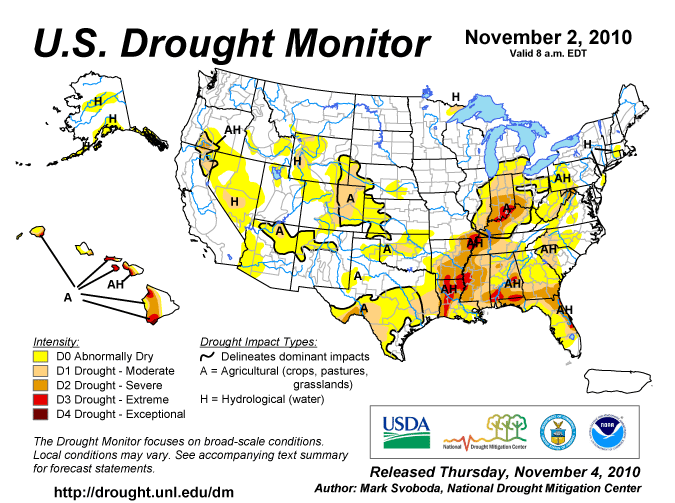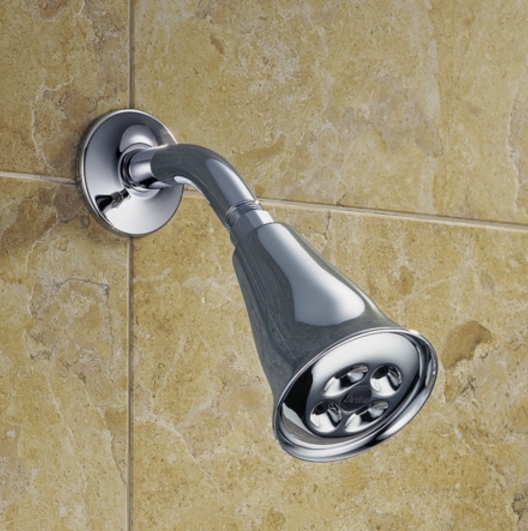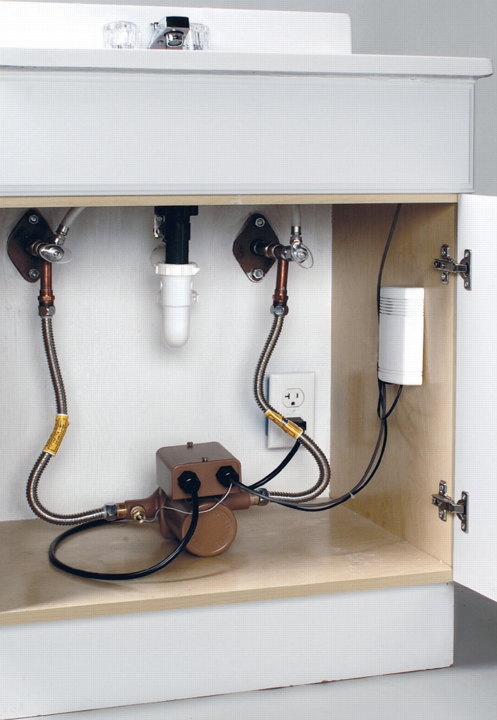Monique,
An alternative to a pool cover, or the liquid Heatsavr cover (which I am not familiar with but will investigate), people could consider ball blankets.
The balls are hollow plastic, around the size of a tennis ball, with a ring molded around them. This stops them spinning, which would actually increase evaporation. In use, you just tip them from whatever container (basket) you keep them in, and they spread out to cover the pool surface, reducing evaporation by 80-90%. For normal swimming they can be raked up with a net; but if you want to swim in a heated outdoor pool in winter, just leave them floating - they'll keep the heat loss way down and bob out of the way as you swim through them.
Blog Post
Green Building Priority #2 – Reduce Water Use

Number 2 on my list of the top-10 green building priorities is to reduce water use.
Reducing water consumption should be a high priority not only in the parched Southwest but throughout the country. Some argue, in fact, that water is going to be an even bigger challenge than energy over the coming decades.
In the United States, nowhere is the focus on water greater today than in the Colorado River Basin. A series of reservoirs on the Colorado, including Lake Powell and Lake Mead, provide water for some 25 million Americans, and allocations of water from the river exceed the available flow. Lake Mead currently stands at half-full, it's scenic shore marred by a giant bathtub ring several hundred feet high. A university study a few years ago said there was a 50% chance that the reservoir would be functionally empty (its level too low to draw from) by 2021!
But in many ways, water resource issues are an even bigger problem in parts of the country that aren't as used to thinking about water. In the fall of 2007, Atlanta came within 30 days of running out of water, with no provisions for what to do if that occurred. Eastern reservoirs tend to be a lot shallower than western reservoirs, so have less storage capacity. Water is such a high priority in part because so much else depends on it. Most of our power plants draw water from rivers and lakes for cooling, and during severe droughts power plants have to shut down. (In 2007 one nuclear plant in Alabama had to shut down for lack of water.) Our food system depends on irrigation--though the U.S. is less dependent on irrigation than China, India, and many other countries. We drink and wash with water. And it takes a lot of water to generate electricity: on average 2.0 gallons per kilowatt-hour in the U.S.
In addition, water is energy-intensive. Pumping water out of the ground, moving it from one place to another, treating it, and then treating the wastewater after we use it accounts for about 4% of the nation's electricity. In many municipalities, water and wastewater infrastructure comprises the single largest use of electricity.
There are lots of good ways to reduce water use. A few of my favorites are listed here:
SUPPORT INDEPENDENT SUSTAINABILITY REPORTING
BuildingGreen relies on our premium members, not on advertisers. Help make our work possible.
See membership options »
Replace showerheads
One of the easiest, least expensive strategies for reducing water use is to replace older showerheads with models that use significantly less water. Some older showerheads use 5 gallons per minute (gpm) or more, while models sold (legally) since 1994 use no more than 2.5 gpm. I've been using a Delta H2Okinetic 1.5 gpm showerhead for years and find it highly satisfactory, even with the low water pressure on my rural water system. Saving water with a showerhead also saves energy--because it's heated water that you're using less of.
Replace toilets
If you have a pre-1994 toilet (one that doesn't list the water consumption on it), chances are pretty good that it's using at least 3.5 gallons per flush (gpf). Since 1994, all toilets sold in the U.S. have had to use 1.6 gpf or less. More recently WaterSense-certified "high-efficiency toilets" (HETs) have been introduced that use no more than 1.28 gpm and meet various flush performance standards defined by the EPA WaterSense program. Unless your house has very long drainline runs (over 20 feet) with very low slope (nearly horizontal), choose WaterSense HET toilets.
Reduce the water consumption of bathroom faucets
More and more new lavatory faucets today meet the WaterSense limit of 1.5 gpf, while most faucets in use deliver far more water. Since 1994, faucets could use no more than 2.2 gpm (at 60 psi water pressure), but older faucets often use a lot more. Most relatively modern faucets can be retrofit with screw-in low-flow aerators. You can go as low as 0.5 gpm, which is usually plenty for brushing teeth, washing hands and face, and shaving. Note that the lower the flow, the longer it will take hot water to reach the tap.
Install an on-demand circulator pump
To avoid wasting water as you wait for hot water to reach your bathroom or kitchen, you can install an on-demand recirculation system. Unlike continuous-circulation systems that are used in hotels, on-demand systems are activated by a user. Several companies make these systems, most using D'MAND® technology licensed by ACT Metlund.

Buy a water-saving clothes washer
Horizontal-axis, front-loading clothes washers use significantly less water than most vertical-axis top-loaders. They also use half the detergent, and most of them wring more moisture out during the spin cycle (saving energy needed for drying). If you're replacing a clothes washer or buying your first, look for a water-saving front-loader.
Buy a water-conserving dishwasher
Check the energy- and water-efficiency of available dishwashers if you're in the market for a new one. The Consortium for Energy Efficiency (CEE) has the best information.
Plant low-water-use landscaping
In many parts of the country, outdoor water use exceeds indoor use. Native landscaping that does not require irrigation can save a tremendous amount of water, compared with lawns and most other conventional landscaping. The term "xeriscaping" is sometimes used to describe this landscaping practice.
Harvest rainwater for irrigating
If you must irrigate, capture rainwater and use that for irrigating. You can install a simple rainbarrel that sits under a downspout at the corner of your house, or install a more sophisticated system with greater storage capacity.
These suggestions are just a starting point; there are lots of other opportunities for savings. Huge savings can also be achieved simply by changing your behavior: taking shorter showers, and not running the water when washing dishes or brushing your teeth, and skipping lawn-watering, for example. To a significant extent, water savings is about common sense.
My top-10 list of green building priorities so far:
#2. Reduce water use
#3. Ensure a healthy indoor environment
#4. Reduce the need for driving
#5. Build smaller and optimize materials use
#6. Ensure durability and reuse existing buildings
#7. Protect and restore the site
#9. Create resilient, climate-adapted buildings
#10. Make it easy for homeowners to be green
In addition to this Energy Solutions blog, Alex writes the weekly blog Alex's Cool Product of the Week, which profiles an interesting new green building product each week. You can sign up to receive notices of these blogs by e-mail--enter your e-mail address in the upper right corner of any blog page.
Alex is founder of BuildingGreen, Inc. and executive editor of Environmental Building News. To keep up with his latest articles and musings, you can sign up for his Twitter feed.
Published November 9, 2010 Permalink Citation
(2010, November 9). Green Building Priority #2 – Reduce Water Use. Retrieved from https://www.buildinggreen.com/news-article/green-building-priority-2-–-reduce-water-use
Comments
Monique, An alternative to a
Let me start out by saying th
Let me start out by saying this is a great article, thanks for writing it!
There is always a category that is not considered when "Builders," in general, are trying to Green up their practices where water is concerned. That category is swimming pools.
Because a lot of Builders don't incorporate swimming pools on a regular basis, they are not considered when they are involved. BUT swimming pools are a huge drain on water resources, and often simply because the owner / operator does not know how to take appropriate measures to conserve as much water as possible.
Studies have shown that a swimming pool loses its entire contents, on average, each year to evaporation. If a pool utilizes a pool cover, about 50% of that water can be conserved. If a HOA has a community pool of 60,000 gallons of water, they could potentially save 30,000 gallons annually by using a pool cover. Better yet, liquid pool covers like Heatsavr can save water 24/7, even while the pool is in use, and they are almost sinfully easy to use.
Please consider any swimming pools that are incorporated in your Builds.
All of the itmes listed here
All of the itmes listed here can help conserve on an existing residential home, however true savings is limited. There needs to be a concerted effort on behalf of the water regulatory industry and governmental agengies to encourage greywater reuse and recycling. This can be done through irrigational methods and household reuse through toilet flushing. We save almost 40% of our water usage by using the Water Legacy's WL 55 by using our washing machine water to flush our toilets. But until there is a ROI or definitive shortages people will not change patterned behavior.
One important item of interes
One important item of interest: There are still many cities/municipalities which do not make use of water metering. These urban areas which set out a flat rate for water and sewage tend to be host to much wasted water. For example, if you are paying a flat rate for your water each month (and are not much of a conservationist)...and own a pool, you are perhaps more likely to empty and re-fill your pool more often than those who pay by usage. Unfortunately, not everyone is environmentally conscious when it comes to these matters.
It isn't just power plants th
It isn't just power plants that use a lot of water for cooling.
Many, if not most large cooling plants in the USA use water-cooled chillers, and they are what the LEED baseline for District Cooling plant performance assessment is based on. But water-cooled chillers use between 7 and 10 liters of water per ton of refrigeration per hour for cooling tower evaporation and blowdown make-up.
You want to use absorption chillers to get better value out of your greenhouse CO2-producing power generation fossil fuel burn? An admirable aspiration - but be aware that the cooling towers will then require around 25% more water.
There are, however, ways of mitigating this water demand: "zero blowdown" systems are becoming more common; and many city cooling plants could make arrangements with the waste treatment utility to use treated effluent (TSE) instead of "fresh" water... if it isn't already nailed down for irrigation of city landscaping, to reduce that water demand!
Added to your list should be
Added to your list should be a priority for everyone to install a SMART CONTROLLER, if they have an underground irrigation system. I prefer the one made by Rain Bird; the ESP-SMT controller. But whatever brand you chose, most have demonstrated a water savings of about 50% in SWAT tests. Irrigation water is a HUGE part of residential water use. And so controlling and limiting the use of that water is key to solving the problem. With modern, affordable smart controllers, there's no longer any reason NOT to have one of these running your system.
Water of course is considered
Water of course is considered a Right, like air. When it's considered a commodity, like wood or oil, everything will change quite quickly.
All those are excellent recommendations. Missing however, is "Occupant Use", which quite possibly is the most significant.
I am certain that people using just the standard legal fixtures and thoughtfully conserving will use LESS water than the same occupant load of people equipped with the entire package of state-of-the-art fixtures, but in the standard usage pattern.
Awareness works better than technology. Tough for our industry to swallow.



Add new comment
To post a comment, you need to register for a BuildingGreen Basic membership (free) or login to your existing profile.